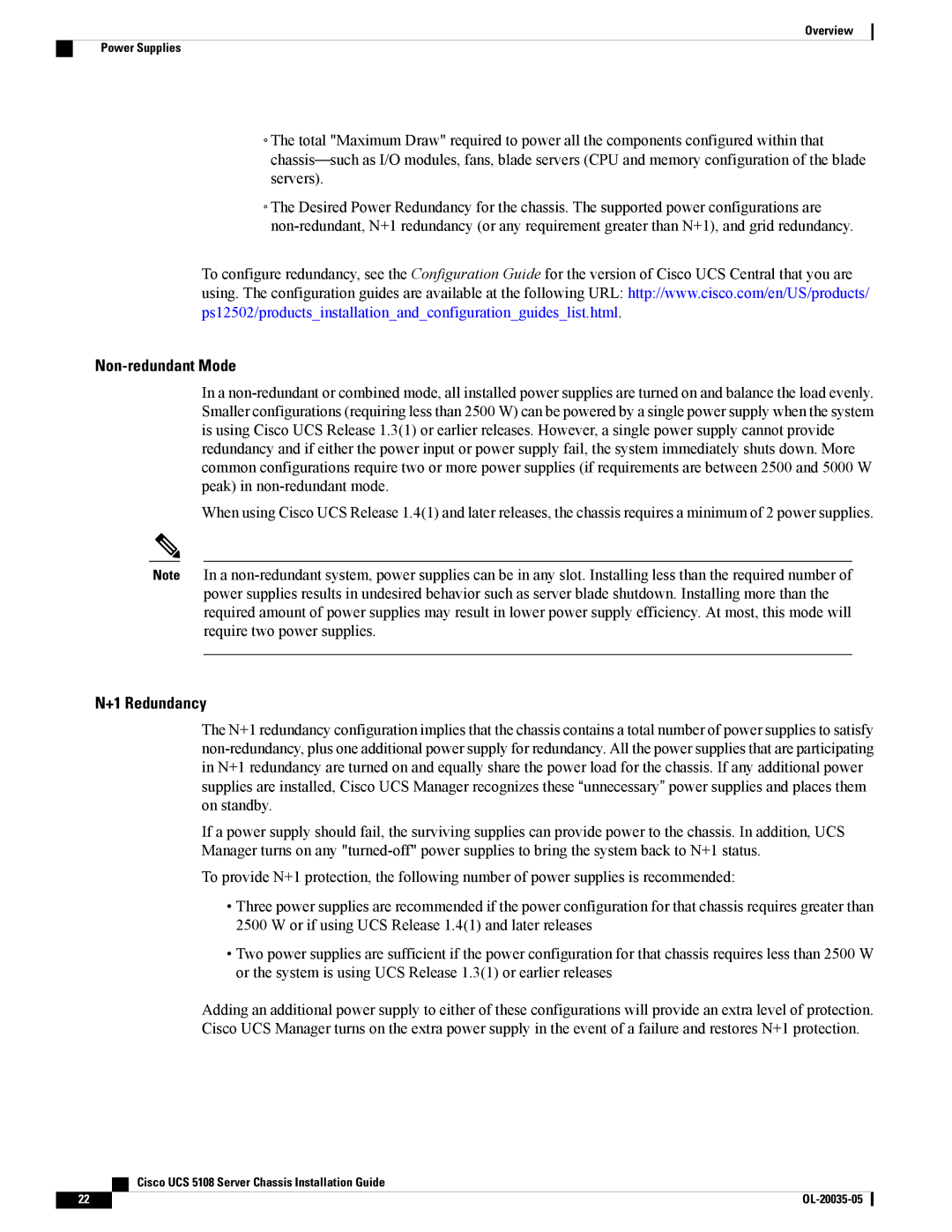
Overview
Power Supplies
◦The total "Maximum Draw" required to power all the components configured within that
◦The Desired Power Redundancy for the chassis. The supported power configurations are
To configure redundancy, see the Configuration Guide for the version of Cisco UCS Central that you are using. The configuration guides are available at the following URL: http://www.cisco.com/en/US/products/ ps12502/products_installation_and_configuration_guides_list.html.
Non-redundant Mode
In a
When using Cisco UCS Release 1.4(1) and later releases, the chassis requires a minimum of 2 power supplies.
Note In a
N+1 Redundancy
The N+1 redundancy configuration implies that the chassis contains a total number of power supplies to satisfy
If a power supply should fail, the surviving supplies can provide power to the chassis. In addition, UCS Manager turns on any
To provide N+1 protection, the following number of power supplies is recommended:
•Three power supplies are recommended if the power configuration for that chassis requires greater than 2500 W or if using UCS Release 1.4(1) and later releases
•Two power supplies are sufficient if the power configuration for that chassis requires less than 2500 W or the system is using UCS Release 1.3(1) or earlier releases
Adding an additional power supply to either of these configurations will provide an extra level of protection. Cisco UCS Manager turns on the extra power supply in the event of a failure and restores N+1 protection.
Cisco UCS 5108 Server Chassis Installation Guide
22 |
|
